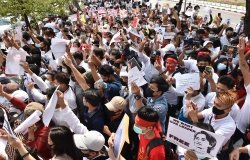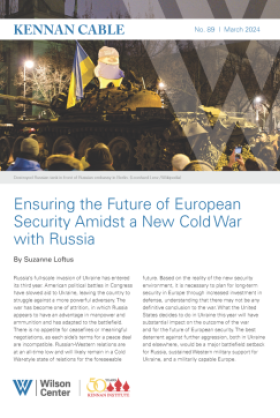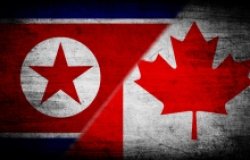Now that the Fighting in the Balkans is Over, Did We Learn Anything? A Retrospective Analysis of Yugoslavia's Dissolution
Ellen Commisso, Professor of Political Science, University of California-San Diengo
Overview
Now that the Fighting in the Balkans is Over, Did We Learn Anything? A Retrospective Analysis of Yugoslavia's Dissolution
April 20, 2005
Staff-prepared summary of the EES discussion with Ellen Commisso, Professor of Political Science, University of California-San Diego
Theories attempting to explain Yugoslavia's violent collapse abound. But now that the fighting is over, Ellen Commisso has analyzed the many theories exploring the roots of the Balkan crisis to determine what, if anything, we have learned. She begins her review of the leading theories with the conviction that generally, even if you do not want to accept a theory there is always something that the work brings which illuminates the study of an issue.
Commisso began by evaluating the so-called "Cultural Explanations," which posit that ancient ethnic hatreds in the region create a "Clash of Civilizations" which inevitably leads to intercommunal violence. However, nationalism and ethnic hatred exist throughout Europe and do not lead to violent conflict. Some theorists have claimed that Tito was able to keep the lid on Yugoslavia's ‘boiling pot of ethnic tension,' and in his absence, no other leader was able to maintain peace. But Yugoslavia was peaceful throughout the 1980s, despite his absence from politics. Still others credit the institutional structure of socialist Yugoslavia for accommodating nationality, though the regime could also be blamed for repressing nationalism, which contributed to the violent backlash in the 1990s.
Another set of theories gives primacy to the role of political leaders in creating the violent outcome. Political leaders are seen as "ethnic entrepreneurs" who exploited ethnic divisions in order to attain and maintain power. The people of the region did not want violence and therefore through the ICTY, these leaders will be extracted from the region in order to allow the country to continue its transition to multiethnic democracy and market economy. Yet, these theories fail to address the fact that these leaders were taking action on behalf of and were supported by the electorate. Other theories blame leaders for not adequately addressing the economic crisis of the late 1980s, which gave greater credibility to nationalists promising change. However, this was the case throughout postcommunist Europe, which proves that economic crisis does not automatically lead to state dissolution. Finally, theorists have blamed the undemocratic political legacy of Tito, which created a government that was not responsive to changes in ethnic tensions and produced unaccountable leaders. Yet, even socialist-era dissidents did not argue for the dissolution of Yugoslavia, but generally focused on intra-system critiques. And again, it does not explain why Yugoslavia was different from the rest of postcommunist Europe.
Theories explaining why violence occurred in the former Yugoslavia aim implicitly at finding a prescription for how to resolve the conflict. Similarly, Commisso's evaluation of the issue leads her to propose a possible solution for the Balkans as well. She explains that from an institutional perspective, the problem with Yugoslavia was that its consociational government structure was unable to adapt to exogenous shocks. The government relied on a stable grand coalition of communist parties from the various titular ethnic groups. Every minority had a veto, and were forced to pursue the interests of its ethnic group. When difficult decisions had to be made, contestation over policy naturally broke on ethnic lines. The system also created a situation in which the largest group—the Serbs—were underrepresented in the Yugoslav government in order for the government to gain the trust of the other ethnic groups. Yet, because it was the largest group, the Serbs identified most strongly with Yugoslavia, and in so doing, it seemed to the other ethnic groups that the Serbs wanted to take over. This led to continued mistrust of the Serbs by the other ethnic groups as well as a growing victimization among the Serbs.
Thus, Commisso's conclusion is that a consociational system in not self-equilibrating, and therefore inherently unstable. Consociational arrangements in divided societies can provide stability and even good government, but they impede political integration. Consociational systems work only in countries with a large ethnic majority, such as Switzerland. Bosnia is certainly not Switzerland, and it will be difficult in setting up a consociational system there not to repeat the same mistakes of Yugoslavia. Commisso proposes injecting a "default mechanism" (such as a monarch or high representative) as a permanent government fixture in order for the consociational system to withstand exogenous shocks.
Hosted By

Global Europe Program
The Global Europe Program is focused on Europe’s capabilities, and how it engages on critical global issues. We investigate European approaches to critical global issues. We examine Europe’s relations with Russia and Eurasia, China and the Indo-Pacific, the Middle East and Africa. Our initiatives include “Ukraine in Europe” – an examination of what it will take to make Ukraine’s European future a reality. But we also examine the role of NATO, the European Union and the OSCE, Europe’s energy security, transatlantic trade disputes, and challenges to democracy. The Global Europe Program’s staff, scholars-in-residence, and Global Fellows participate in seminars, policy study groups, and international conferences to provide analytical recommendations to policy makers and the media. Read more
Thank you for your interest in this event. Please send any feedback or questions to our Events staff.










